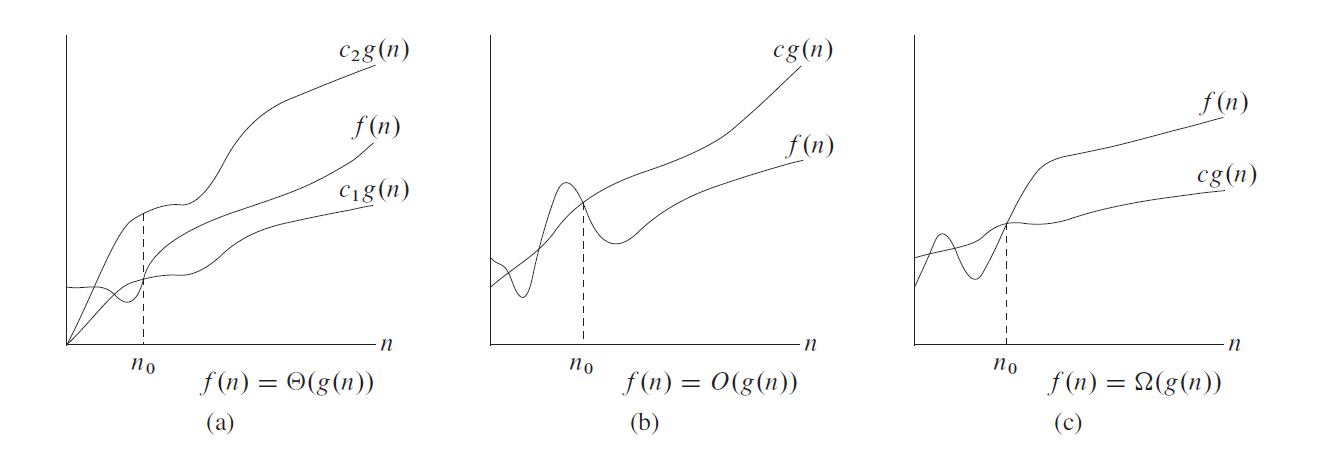-
When we are only concerned with the order of growth of a funnction at large input, we are studying the asymptotic efficiency. 1 2 3
-
For a given function
, the asymptotic tight bound denoted is defined as -
For a given function
, the asymptotic upper bound denoted is defined as -
For a given function
, the asymptotic lower bound denoted is defined as -
For a given function
, the strict asymptotic upper bound denoted is defined as Here
becomes infinitesimally small relative to as . -
For a given function
, the strict asymptotic lower bound denoted is defined as Here
becomes arbitrarily large relative to as . -
An alternative definition can be formulated by considering
. -
CLRS 3.1 For any two functions
and we have that -
The asymptotic functions above define equivalence on the space of functions
-
Some additional rules

Links
Footnotes
-
These can be used to analyze other functions as well. However, do note that we implicitly assume that for large enough
, the function becomes non-negative. ↩ -
When we say
we implicitly mean . ↩ -
Another way to read the definitions is that the only way for
to compare to is if it is scaled by an appropriate constant . ↩